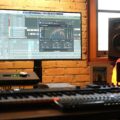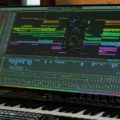What is sound mastering Sound Mastering - The Requirement - What are the requirements for effective sound mastering procedures? This is a common question that I often encounter. The audio CD mastering process adds a unique polish to tracks and songs, making them more sonically cohesive. Many albums simply undergo basic sound mastering processes and are then transferred onto a disc. Such outdated methods do… ? There are numerous opinions on what it means precisely, so let’s examine the general process of music production.
Post-mixdown After a track is mixed, it is typically sent to a mastering studio for the finishing touches. Many mixes arrive at less than 100% of their potential, so it’s the mastering engineer’s job to fix any errors and ‘sweeten’ the mix. Done correctly, this should give the track the right balance in terms of frequency content, width, dynamics, and of course, loudness in the modern era.
Depending on the state of the mixdown, the mastering applied can be either corrective or enhancement-oriented. Ideally, it should be more of the latter than the former. When corrections need to be made, a balance must be struck, as any change in one aspect of the mix typically affects another. For example, if a vocal is unclear, some EQ might be applied to bring it out, but this could cause other elements in the mix to stand out too much. In this regard, there’s always a give-and-take.
Comparison to other tracks Another goal in mastering is to ensure the finished track holds up against its peers when played side by side. This is the main reason for the ‘loudness war’, as each artist feels the need to compete with the loudness levels of other artists. This has led to an escalation of loudness levels to the point where music is compromised in the pursuit of higher levels.
Audio Mastering Music Production - Improve Your Sound - The rise in popularity of work-from-home studios has significantly impacted the music production landscape in recent years, driven by the increasing availability of tools and technology. This growth has led to the emergence of mobile recording rigs, making it possible to record full band performances anywhere. While one might anticipate a wealth of high-quality music,… Tools:
Hardware or software? The tools used for mastering range from digital plugins to classic analog gear.
There’s often a heated debate about the merits of both, especially regarding whether digital can measure up. Well-known high-end digital hardware units like the Weiss EQ-1LP are considered excellent digital EQs, employing linear-phase EQ techniques. Compressors such as SSL, Neve, and Manley may be used in the analog domain, while their digitally emulated counterparts exist in plugin form.
Listening tools In addition to these tools, an acoustically suitable room and monitoring system are essential. And of course, the most important tool is the ears and experience of the engineer.
Techniques for Audio Mastering
Equalization
Many of the basic techniques for audio mastering are similar to the mixing process itself. The track is assessed to identify any problems first. If these are frequency-related, a common approach is to use equalization to rebalance the frequency spectrum until it is considered even. Due to the ears, room, or monitors of the person mixing the track, there might be too much or too little low end.
In this case, the mastering engineer may boost the low frequencies. Often, the mastering engineer has access to better-sounding EQ, which can result in a sweeter sound. Other times, linear-phase EQ may be used, which is considered transparent and corrective only.
Compression
The second most common type of processing used is compression. This can be done both digitally and with analog. Units like the SSL bus compressor are popular for imparting a distinct sound to mixes when appropriate. Compression can ‘gel’ or ‘glue’ a mix together, making it appear more polished. This is a result of the reduction of transients and the tightening of the mix’s dynamics. If the snare and kick were poking through the mix a little, compression can tame them, making the mix more cohesive.
Multiband
Multiband processing is quite popular today, especially in the form of plugins. This allows compression of specific bands only, providing an effective way to fix issues in the mix without impacting other areas. If the kick and bassline are too prominent, they can be compressed while allowing the rest of the mix to breathe. Similarly, if the high end is too harsh in certain places, multiband can be applied to target only those areas that need adjustment.
Getting Wide
The third major aspect examined in mastering is width. By manipulating the stereo and mono components of the mix, the sound is widened, creating a more three-dimensional feel. Multiband processing is also employed here to affect only specific areas of the mix. Care must be taken not to overdo this to the point of causing phase issues. In this case, if too much widening occurs, when the mix is played on a mono system, some parts of the mix may cancel out and not be heard.
Conclusion
When all is said and done, the finished master should be enjoyable to listen to on a variety of playback systems. This includes headphones, computer speakers, car radios, home stereos, and sometimes even club systems. When a mix translates well across all these environments, the mastering job can be considered a success.
Manuel Marino is a seasoned Senior Producer, Music Composer, and Artist with over a decade of experience. He specializes in branded entertainment across various mediums, including video games, films, and advertising campaigns. With 20+ years as a game music composer, Manuel has worked on numerous platforms, creating diverse orchestral soundtracks. HIRE ME


 Manuel is a passionate, driven, and techsavvy AV technician,
Manuel is a passionate, driven, and techsavvy AV technician, 


